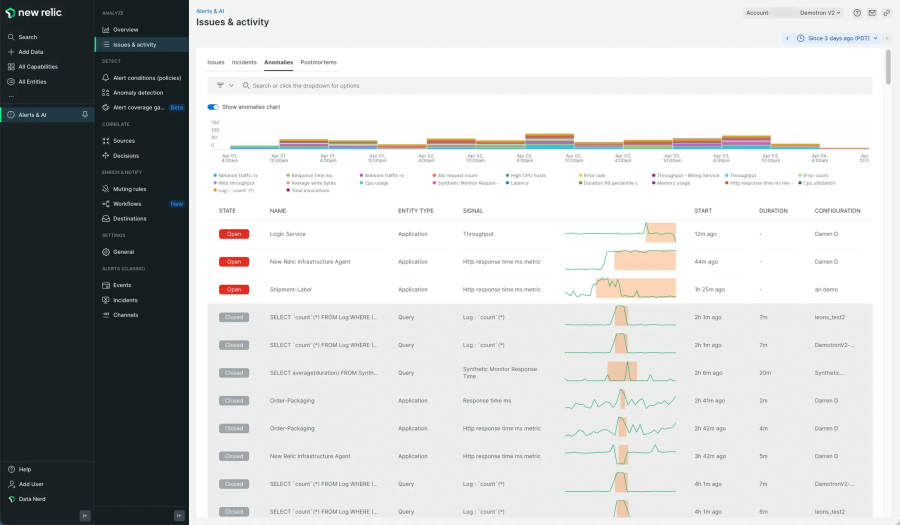Every line of code in software development is like a piece of a complex puzzle, where each piece needs to fit perfectly to ensure the whole picture is flawless. However, code-level vulnerabilities are like misplaced puzzle pieces, creating gaps that can weaken the entire structure. These vulnerabilities, if not managed properly, can lead to security breaches, data loss, and a damaged reputation.
In this blog, you’ll learn the essentials of managing code-level vulnerabilities – a critical task to maintain the integrity, security, and performance of your software. You'll learn practical strategies for the identification, management, and prevention of these vulnerabilities, along with insights on how New Relic can be a powerful ally in this process.
Understanding Code-Level Vulnerabilities
Code-level vulnerabilities are hidden flaws within a software's source code that pose significant risks. They arise from various sources, such as coding errors, the use of insecure libraries, or inadequate security practices. These vulnerabilities range from simple bugs that cause minor disruptions to critical flaws that can be exploited for unauthorized access or data theft.
The risks associated with these vulnerabilities are not to be underestimated. They can lead to severe consequences like system crashes, exposure of sensitive information, and even allow attackers to take control of affected systems. For businesses, this can mean not only operational disruptions but also reputational damage and significant financial losses.
Identifying and understanding the nature of these vulnerabilities is the first step in managing them. Common types include SQL injection, cross-site scripting, and buffer overflows, each requiring specific strategies to address. As the digital landscape evolves, so do the complexity and sophistication of these vulnerabilities, making it crucial for developers to stay informed and vigilant in their coding practices.
Leveraging New Relic for Vulnerability Identification
New Relic plays a pivotal role in the early detection and management of code-level vulnerabilities. Its comprehensive monitoring capabilities enable teams to identify potential security issues before they escalate.
Real-time monitoring and anomaly detection
New Relic's real-time monitoring is particularly effective for spotting unusual patterns that could indicate vulnerabilities. For example, an e-commerce platform may notice through New Relic's dashboard an unexpected spike in database requests. This anomaly could point to a potential SQL injection attack, prompting an immediate investigation.
To see the anomalies of a specific configuration, go to one.newrelic.com > All capabilities > Alerts & AI and click Anomaly detection in the left pane.
Code performance insights
By analyzing code performance, New Relic can help identify inefficient code that may be vulnerable. Slow response times or high error rates in certain parts of the application might indicate underlying security weaknesses.
Application behavior analysis
In another scenario, a healthcare application using New Relic observed irregularities in user authentication processes. This anomaly was identified as a potential flaw in session management, which could lead to unauthorized access.

Advanced Alerting Systems
New Relic’s advanced alerting system is another key feature. By setting up custom alerts, teams can be notified of specific patterns indicative of vulnerabilities. For instance, alerts for unusual outbound network traffic might indicate a potential data exfiltration attempt stemming from a code exploit.
Through these capabilities, New Relic provides a robust framework for early detection, helping teams to manage and mitigate code-level vulnerabilities effectively.
Strategies for managing and mitigating risks
Once vulnerabilities are identified, it's crucial to have strategies in place for their management and mitigation. This involves a series of steps to ensure the security breach is contained and rectified.
- Implementing security best practices is fundamental. This includes adhering to principles like least privilege, securing data in transit and at rest, and ensuring that all security patches are applied promptly.
- The immediate step after identifying a vulnerability is to contain it. This could involve temporarily disabling affected services or restricting access. Following containment, developing and deploying patches or updates to fix the vulnerability is crucial.
- Regularly reviewing and updating code is essential for preventing vulnerabilities. This includes keeping all software dependencies up to date and reviewing major code changes for potential security issues.
- Develop risk mitigation strategies, such as having backup systems, using secure coding practices, and conducting regular security audits. These strategies help in reducing the likelihood of future vulnerabilities.
- Utilize automated tools for security scanning and vulnerability detection. Automation helps in consistently checking for vulnerabilities without manual intervention, saving time and resources.
Conclusion
Effectively managing code-level vulnerabilities is a critical aspect of maintaining secure, reliable software. By leveraging tools like New Relic for continuous monitoring and employing robust management strategies, organizations can significantly mitigate the risks associated with these vulnerabilities. The key lies in proactive identification, prompt response, and integrating security as a fundamental part of the development process. Remember, Security RX is a continuous journey — one that evolves with the changing technology landscape. By staying vigilant and adopting these best practices, you can safeguard your software and data against potential threats.
Étapes suivantes
Monitor your vulnerabilities now. To get started:
Les opinions exprimées sur ce blog sont celles de l'auteur et ne reflètent pas nécessairement celles de New Relic. Toutes les solutions proposées par l'auteur sont spécifiques à l'environnement et ne font pas partie des solutions commerciales ou du support proposés par New Relic. Veuillez nous rejoindre exclusivement sur l'Explorers Hub (discuss.newrelic.com) pour toute question et assistance concernant cet article de blog. Ce blog peut contenir des liens vers du contenu de sites tiers. En fournissant de tels liens, New Relic n'adopte, ne garantit, n'approuve ou n'approuve pas les informations, vues ou produits disponibles sur ces sites.



